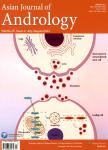Epidemiologic methods for investigating male fecundity
Epidemiologic methods for investigating male fecundity作者机构:Department of Public Health Section for Epidemiology Aarhus University Aarhus Denmark
出 版 物:《Asian Journal of Andrology》 (亚洲男性学杂志(英文版))
年 卷 期:2014年第16卷第1期
页 面:17-22页
核心收录:
学科分类:090603[农学-临床兽医学] 090801[农学-水产养殖] 0908[农学-水产] 09[农学] 0906[农学-兽医学]
主 题:data collection epidemiology epidemiological monitoring fertility sperm count time-to-pregnancy (TTP)
摘 要:Fertility is a couple concept that has been measured since the beginning of demography, and male fecundity (his biological capacity to reproduce) is a component of the fertility rate. Unfortunately, we have no way of measuring the male component directly, although several indirect markers can be used. Population registers can be used to monitor the proportion of childless couples, couples who receive donor semen, trends in dizygotic twinning, and infertility diagnoses. Studies using time-to-pregnancy (TTP) may identify couple subfecundity, and TTP data will correlate with sperm quality and quantity as well as sexual activity and a number of other conditions. Having exposure data available for couples with a fecund female partner would make TTP studies of interest in identifying exposures that may affect male fecundity. Biological indicators such as sperm quality and quantity isolate the male component of fertility, and semen data therefore remain an important source of information for research. Unfortunately, often over half of those invited to provide a sperm sample will refuse, and the study is then subject to a selection that may introduce bias. Because the most important time windows for exposures that impair semen production could be early fetal life, puberty, and the time of ejaculation; longitudinal data over decades of time are required. The ongoing monitoring of semen quality and quantity should continue, and surveys monitoring fertility and waiting TTP should also be designed.



